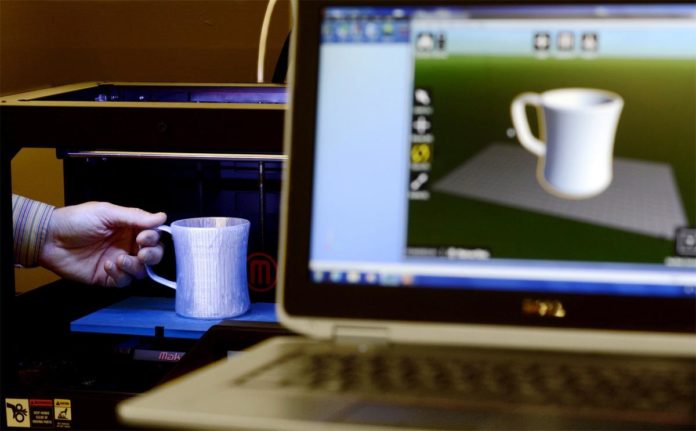Ever since Willy Wonka’s most innovatively tasty invention, the Everlasting Gobstopper, was shown in theaters, kids and candy makers alike have dreamed of the future of food. What will it look like? How small will it be? While the closest candy to an Everlasting Gobstopper is the “60-minute Candy” lollipop from Japan, futuristic food is emerging hot off the presses in the U.S. and beyond thanks to 3D printing technology.
Let’s start with the basics: What is 3D printing? How does 3D printing work?
3D printing, also known as additive manufacturing, is the process of making a three dimensional physical object from a digital file, commonly by laying down (or “adding”) many consecutive layers of materials. Think of it like making a skyscraper out of Legos. It all starts with an image of what you want the design to look like.
With Legos, this could be the picture on the box, but in the case of 3D printing it is an image created on a 3D modeling software program. In order to build this image, you have to start in smaller layers. You might put down a single row of blocks to cover the perimeter of the Lego skyscraper before stacking additional layers on top. In 3D printing, the virtual image is sliced into hundreds or more horizontal layers and is built one layer at a time, although the layering is not always visible in the final product.
3D printing has grown from creating toys, shoes and guitars to prosthetic limbs, cars and now food.
Originally, food printers experimented with creating bite-sized geometric shapes out of sugar and chocolate. Then, they turned the heat up a bit. Using virtually any paste-like real food ingredients – whether its pizza dough, tomato sauce, ground meat or mashed up vegetables – press a few buttons, and you can print your dinner.
Some of the hot printers right now include the Pancake Bot, a kickstarter success that allows users to “print” out their pancakes by tracing any image on the included software, Hershey’s CocoJet that prints white, milk or dark chocolate shapes on demand, and The Foodini by Natural Machines, which focuses on healthy, organic printed foods that can be cooked after printing.
The Foodini in particular acknowledges the fact that 3D printing technology is meant to take away the time consuming and difficult aspects of food preparation, like making pies or filled pasta. Most printers are targeted at professional chefs and food manufacturers, but some are working to lower the costs of the printers and make them household friendly. The Foodini hopes to create small capsules that can be put into the printer, similar to a Keurig.
Food printing has some unique advantages to it as well. Along with creating foods in complex shapes and images, there is a possibility that food printing, combined with other technology, could provide you with a specially printed meal that contains all the vitamins and nutrients your body may be deficient in after a long run or an illness. NASA is investing in 3D food research to determine its value to astronauts, who require specific nutrition and low maintenance foods while being deployed on long missions.
Some of the disadvantages to 3D food printing are the limited types of recipes printers can currently produce, printers are only able to use pureed food so regular food must be blended in order to be used and the printers do not cook the food, they simply create the desired shape.
So what do you think, Butter Lovers? Would you eat pizza from a 3D printer? Would you buy one when it hits the shelves for consumers?
Visit 3DPrintingIndustry.com for the latest news on the future of food and other 3D created products.








